-
Posts
19,761 -
Joined
Content Type
Forums
Detector Prospector Home
Detector Database
Downloads
Posts posted by Steve Herschbach
-
-
Very nice nuggets Alex, very happy to see you finding gold! Yes, it is hard work.....
-
Hmmm, the plot thickens. The link AussieMatt provided above is now dead. The new battery is now listed on the main accessory page as "Available in Australia Only" http://www.minelab.com/usa/accessories-1/by-detector/gpx-series-#sec259227
Well, aren't you guys (blokes) special!
-
Here it is from http://www.icmj.com/miningsummit.php
Vendor/Exhibitor: From: ICMJ's Prospecting and Mining Journal - host Aptos, California 49er Mining Supplies Columbia, California A&B Prospecting Mesa & Prescott Valley, Arizona Advanced Geologic Chester, California Advanced Mining Equipment Long Beach, California American Mining Rights Association Coulterville, California Ancient Gold Jewelers Placerville, California Aurora Mining Products Galt, California Barrington Enterprises Auburn, California Better Basics Mining Grass Valley, Calfornia Black Sheep Mining Sacramento, California Bucket Digger Rancho Cordova, California Camel Mining Products Quartzsite, Arizona Cascade Mountains Gold Independence, Oregon Comstock Gold Prospectors Reno, Nevada Dahlke Dredge Mfg. Dealy, Texas David H. Fell & Company
City of Commerce & Burlingame, CA;
and Phoenix, ArizonaDragonfly Gemz Roseville, California Fossickers North Bend, Washington Germstone Equipment Mfg. Simi Valley, California Global Mining Equipment Boise, Idaho Gold Country Treasure Seekers Placerville, California Gold Grabber Mfg. Riggins, Idaho Gold Killer Atascadero, California Goldfield International Lindon, Utah Gore Valley Ventures Vail, Colorado Jim's Metal Detectors Yucca Valley, California Jobe Wholesale Bend, Oregon Keene Engineering Chatsworth, California Leonard Melman Vancouver Island, BC, Canada Make Your Own Gold Bars Huntington Beach, California MB Gold Mfg. San Jose, California MGM Enterprises Maple Valley, Washington Mineral Enterprises Nevada City, California Miner's Cache Redding, California Miner's Keepers Surprise, Arizona Mining Books.com Colorado Springs, Colorado Mother Lode Goldhounds Foresthill, California Naturally Mine of Foresthill Foresthill, California Nevada Publications Reno, Nevada Pioneer Mining Supplies Auburn, California Placerville Hardware Placerville, California Placerville Polaris Placerville, California Prospecting Channel Oroville, California Public Lands for the People Woodland Hills, California Roaring Camp Mining Company Pine Grove, California Tuolumne Sunshine Mine Woodland, California -
Like everything it just depends. A single frequency can ground balance to one thing at a time, usually the ground itself. In salt water beach environments multifrequency detectors offer the ability to balance to the ground (magnetite) and also to the salt signal simultaneously. Therefore in nearly all salt water beach settings multifrequency detectors have a true advantage.
One cannot ignore the fact that for hunting silver coins in a turf (grass yard) type environment that multifrequency detectors have a huge following due to their ability to produce. Just like nugget hunters gravitate to certain machines (usually PI and now ZVT) for top end performance, the same can be said of the turf hunters. We are not talking sheer depth here but reliable discrimination as deep as it can be had on high conductor targets.
That edge is generally not retained on mid to low frequency targets and that is where single frequency detectors tend to shine these days. And when talking single frequency I am including machines like the DEUS which allow you to choose a frequency, but can only run at one at any given time. As a rule single frequency machines have faster responses and deal with dense trash easier than multifrequency detectors.
The above are generalities only and people will rightly say their single frequency machine finds silver just great, thank you very much. And people with multifrequency machines do very well on low and mid conductors. In my opinion really good detectorists can do very well with any of the $700 plus top end machines and it boils down more to what features you like in the machine, how it feels on your arm, how it sounds to your ear, what kind of menu arrangements/structures you prefer, coil selection, etc. Everything else is just splitting hairs.
-
The ICMJ 2016 GOLD PROSPECTING AND MINING SUMMIT is only two months away, and this is the latest update.
Venue: April 16 & April 17, 2016, at the El Dorado County Fairgrounds, 100 Placerville Drive, Placerville, California.
Over 80 booths featuring the latest in prospecting and mining equipment. (Booth spaces are sold out.)Hours:
Saturday, April 16 10am - 5pm
Sunday, April 17 10am - 4pm
Cost: $5 at the door. Children under 12 are free with a paid adult. (Fairgrounds charges $5 parking.)
The Lecture Schedule for Saturday April 16, and Sunday April 17 is now set:
Saturday, April 16
10:30am How to Research a Promising Location for Gold Prospecting Don Robinson
11:30am Staking and Holding Mining Claims Chris Ralph
12:30pm Current Regulations & Permitting Charles Watson
1:30pm Old Mines: Hazards & Benefits for the Amateur Prospector Professor George Wheeldon
2:30pm Gold & Precious Metals Markets Leonard Melman
3:30pm Basic Gold Prospecting Techniques Chris Ralph
4:30pm Raffle
Sunday, April 1710:30am Mineral Identification Chris Ralph
11:30am Retaking Control of Regulations Through Mining Districts Scott Harn & Clark Pearson
12:30pm Metal Detecting for Gold Steve Herschbach
1:30pm Gravity Separation Dr. Thom Seal
2:30pm Ask The Experts: Question and Answer Session Chris Ralph, Scott Harn, Clark Pearson, Dr. Thom Seal, Pat Keene, Leonard Melman
3:30pm Raffle
Many more events and details at http://www.icmj.com/miningsummit.php
-
Is the gold price low? On Jan 3, 2000, the first official price day of the 2Ks, gold stood at US$288.50 per Troy ounce. Been some ups and downs since then but I am happier looking for gold now then I was then, even though a buck is worth a little less now. Anything over $1000 an ounce suits me fine. I am not so sure about over $2000 an ounce because that means a good gold price but probably everything else is doing real, real bad. Be careful what you wish for.
-
A zillion photos of the new MarsMD Universal Shaft and details on how it hooks up to other detectors at the MD-Hunter Blog
I get the distinct impression there is a connection between MarsMD and the MD-Hunter Blog.
-
Very interesting, I never heard of a White's silver bar, but a guy is trying to sell one on eBay right now for $625 http://www.ebay.com/itm/25-TROY-OZ-999-FINE-SILVER-by-WHITES-METAL-DETECTORS-OLD-POUR-METAL-FLOW-REV-/321995391032?
-
You are the man Bob! Hope you got at least one of the little bars for the effort.
I have a hard time imagining hiding 1000 ounces of silver or gold or whatever and then forgetting where I put it. People with bad memories really should just use a bank and leave hiding stuff to the rest of us!
-
The MX Sport can't be an MXT. The reality is the MXT is its own machine based on an old, very large circuit board. http://www.detectorprospector.com/forum/topic/1533-whites-mx-sport-waterproof-metal-detector/?p=18386
People think "just make it smaller". Well, it does not work quite like that. These machines run mostly in software, and changing one line changes many other things. For instance, just adding a frequency shift to the MXT would be very difficult. In order to not only make a smaller board but to also add various new features, you pretty much just start over. The concept of the MXT is there as an example and something to emulate. At the end of the day however the MX Sport I am 99% certain will act more like the MX5 than the MXT as far as the sounds it makes and just how it acts in general. Some people are simply going to like their old MXT more and that is the way it is. The MXT in my case just lacks too many features I want that the MX Sport offers. Make your choices and take your picks but no one machine is going to make everyone happy.
Again, just my opinion, but if you want a "real" MXT the only way that is going to happen is if you get an MXT. Been there done that myself so I am looking for something different. I have a better chance at being pleased, methinks.
I do not expect more absolute depth from single frequency VLF metal detectors. What we can get is better separation/target recovery and discrimination by way of faster processors and better software so that would be my expectation/hope.
-
Yeah, I guess I have been remiss in that. I have had good intentions in that regard but have been ridiculously busy on other stuff. One nice find was shown blatantly here in the last couple months as an aside to another thread, and I was somewhat amazed nobody asked what it was I was holding in my hand. Then came this last issue of the ICMJ, and still no comment.
So there is a mini treasure hunt for people. In the meantime I will work on getting something up by way of a thread on 2015 in review. It plays into a little "Facebook farewell" I have been planning anyway.
-
Well, that took an unexpected turn for the best.
Thanks klunker. I honestly do not know what to do sometimes, and am bound to make mistakes. This forum is founded on an idea sadly lacking today - that of common courtesy and respect combined with attention to factual information. The forum if people think much about it only has one rule - the Golden Rule. Treat others as you would wish to be treated and all will be well.
Thank you once again everyone for helping reinforce my faith that there are still good people left in the world.
-
-
Well a half dollar at that! I think I can say without a doubt that is a better coin find than any I ever made in the United States.
I do need to tear myself away from nugget hunting a bit this year.
-
I may be biased here but I can promise you the XP quality is second to none. I would not be willing to vouch for the newcomers as yet. The first is not even out yet. Anyone here had experience with the Golden Mask shaft? I asked over at Tom's also http://www.dankowskidetectors.com/discussions/read.php?2,98768
-
Ok Ray, you just absolutely kicked my posterior. We each got our new DEUS about the same time, and then I dropped into my "off season" mode to focus on other things. I actually have not found a single thing with that new DEUS yet, and you go and post this. Wow, that is a beauty, looks almost like it was dropped yesterday! Great find, good for you.
-
I don't think most VLF tracking systems historically have been up to snuff in Australia. Especially on high gain/high frequency machines like the GMT, they have a hard time keeping up and then conversely overshoot. The beauty of optional ground tracking I suppose is - use it where it works, turn it off where it does not.
Digger Bob is right, it is not like the MXT was ever God's gift to prospecting. It is just that it sure did shine in certain situations, like all detectors. The machine absolutely ruled at Ganes Creek, Alaska for years due to low ground mineralization and minimal hot rocks favoring its larger 12" concentric coils, which in turn favored its ferrous id capability, which helped separate those big nuggets from all that big junk. The MX Sport will probably do well for similar situations and be a bit lighter and waterproof to boot. But anyone shopping for a VLF just to nugget hunt I doubt it would even come up in the conversation normally.
I have to have one just because it has been a long time since I have been fired up over anything new from White's and this one has me fired up. Might be just the machine for Lake Tahoe when I am not running a PI.
-
Yay!! Congratulations Alex!!!
-
So I am Googling around on this and trip over this other one - looks like a very interesting option for a Minelab PI or whatever.
"Telescopic stem for Golden Mask metal detectors, light-weight and easy to transport. Made from 100% carbon fibres, light and strong. Very compact when collapsed."
137 Euro mailed to US or about $150 delivered. http://www.goldenmaskdetectors.com/accessory_details.php?id=9&lang=en
Here is an Oz thread about a guy selling one he modified for the Minelabs - guess he did not like it? https://www.prospectingaustralia.com.au/forum/viewtopic.php?id=14889
-
You may want to read the Owners Manual for the MX Sport.
page 25:
"To adjust SAT when All Metal, Relic, or Prospecting programs are in use: Press Options and use the arrows to select SAT. Use the + & - to select levels 0 = no SAT to 6 = Hyper SAT. Use the SAT speed nearest “0” that maintains a steady continuous threshold hum. Quicker SAT speed settings, near to 6 (Hyper SAT), require quicker search coil sweep speeds due to the fact that fast SAT can tune out metal target responses if swept too slowly. Select the slowest (lowest number) SAT speed that maintains a steady threshold and no faster. Match the speed the search coil is swept to the SAT speed. Practice with a target above the ground to assure the search coil is being swept briskly enough to respond to targets."
There seems to be an assumption that 20+ hours means 20 hours. Manual page 5:
"The MX-Sport operates for up to 40 hours (without backlight) using eight quality “AA” batteries."
20+ hours is just playing it safe for somebody running the machine in cold water with the backlight on or other circumstances that might result in a less than optimum running time.
Plus - it is all preliminary information subject to change.
As to whether the MX Sport outperforms the MXT or vice versa is nothing but speculation at this point. I am 100% certain personally both will have their place. There is no real reason everyone with an MXT should get an MX Sport and I doubt White's intends that. The idea is to convince a potential Fisher or a Garrett etc customer to buy a White's instead, and I am sure White's would be fine with people buying either model.
-
-
This new shaft is supposed to have the ability to work with dozens of metal detectors. It has been delayed for some time but will supposedly hit the market in the next couple months for around US$130 plus shipping. Shipping might be a bit since this is from overseas unless somebody is distributing for Mars in the U.S.
Anybody have any wild guesses where the inspiration for the design came from?
More Information Mars MD Website
The images on the website link above look small but are HUGE and so very slow to download. If you click on one you will se what I mean.
-
It is a European project.
Acknowledgements
Special thanks are due to Jacqueline Hannam of the University of Liverpool, whose knowledge of soil magnetism and the prediction of magnetic properties from other geological and soil data enabled the location of suitable soil to be so efficient.
Nicola Filippi of the European Soil Bureau at JRC supplied ecopedological maps of Italy and contact details for Regional soil science experts.
Andrea Vinci, a soil scientist at Regione Toscana supplied GIS data of soil, geological and other key information that meant that most of the work was done before the field survey began. The authors are very grateful to Dr Vinci for this help.
The authors are indebted to Professor Vlado Valković and Jasmina Obhodas of the Ruder Bosković Institute in Zagreb. Data collected from measurements on the extensive soil bank built up by IRB were a vital part of the understanding of which soil types have the magnetic properties that are most important for detectors.
Many thanks to Matt Pike for his tireless and enthusiastic work and to Giuseppe Antonello and Marco Basso who did the (literal) spade-work.
Finally the authors are extremely grateful to Laura and Cesare Dell'Aquila who were only too happy to allow us to take a large amount of soil away from their farm in Ancaiano and to spend time helping us collect and load it.
-
OK, if people have not figured it out yet when something attracts my attention I can go kind of nuts over it. The flip side is once I get distracted by the latest new thing that fires my imagination I may wander off the previous item for some time before getting back to it. Such has been the ATX project. I never leave things undone however and this one has got to get off the "to do" list.
I got a request recently for a better photo of the circuit boards. If the person involved is looking for me to get down and dirty and identify every component I am sorry but that is not going to happen. I don't mind taking another couple photos but this forum is not about trying to deconstruct circuit boards. So I hope this helps but if not, sorry!
Anyway, I am running out of project time before it is time to get serious about prospecting again so time to bring this thread back to life. Do not expect results tomorrow but I am going to get this wrapped up this month.
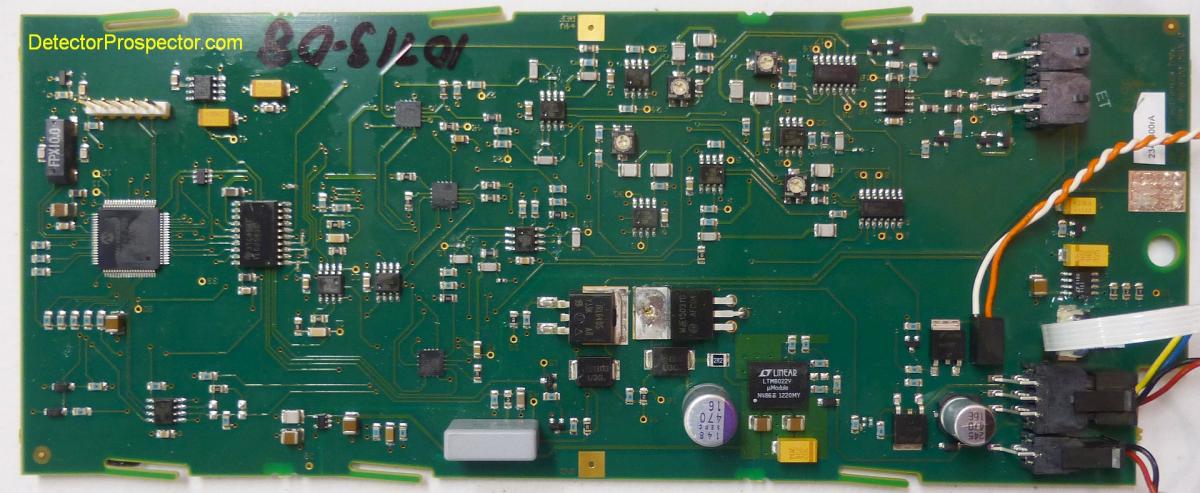
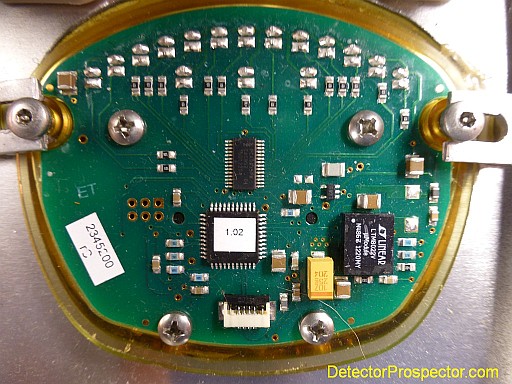


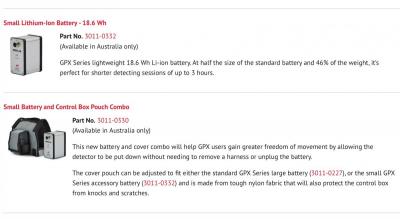

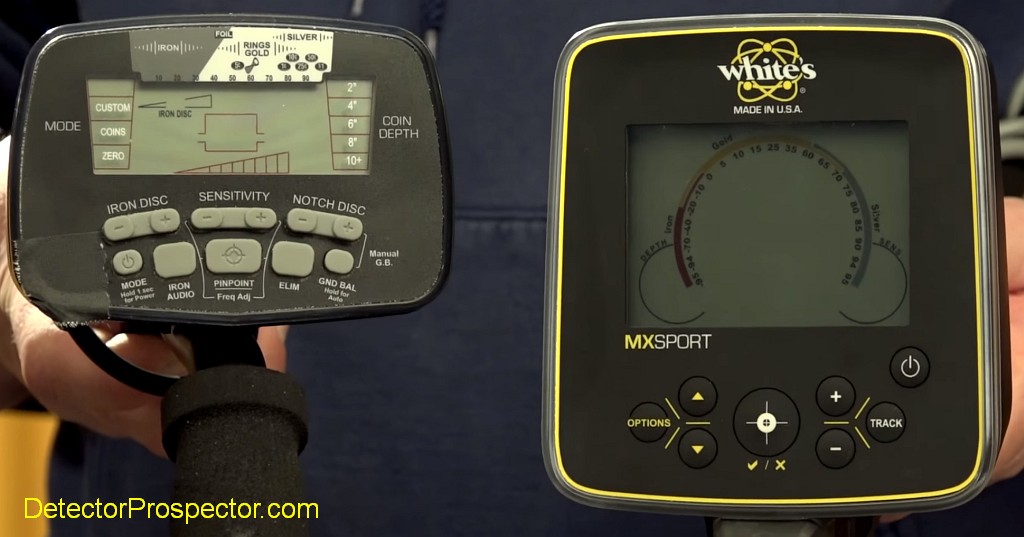
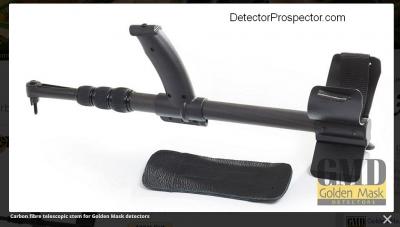
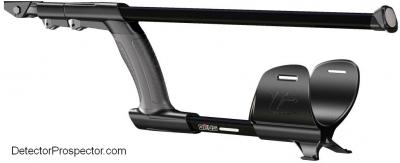
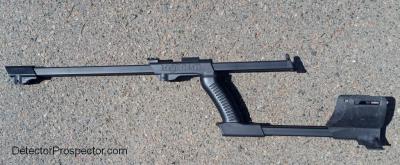
New Detech Chaser Metal Detector
in Metal Detector Advice & Comparisons
Posted
It has never been stated by anyone official that the Nokta Impact will be a copy of the Racer in any way. Kellyco leaked a mockup sales page at one point that used a Racer as the basis for the ad mockup but the pictures and prices had nothing to do with real product and were quickly pulled. The Impact is a new model intended as being capable of running at one of several frequencies, selected by the user. Not that this is "new" but it is new for Nokta.
Thanks for the update on the new Detech models, they look interesting. http://detech-metaldetectors.ro/en/product/detech-chaser-14khz-vlf-metal-detector
For now, only the 14kHz version is available as this is the best general use frequency. The other versions (4,8 kHz and 28 kHz) are scheduled to be released later in 2016 and 2017.
The new Chaser is intuitive and extremely easy to operate:
With its multi-purpose 14 kHz operating frequency, this exceptional all-terrain metal detector is useful for all kinds of metal detecting: coin shooting, relic hunting, nugget hunting, searching for very deep treasures, beach hunting… you name it!
Available coils: Ultimate 7”, Ultimate 9″ and Ultimate 13” search coils.
All search coils are fiber glass reinforced, ultralight, solidly built, waterproof and shock-resistant. Scratch resistant coil covers come standard with all coils.
Please note: all the coils of the other 14 kHz Detech metal detectors (EDS Plus I/II, EDS Winner I/II, EDS Reacher 14 kHz) can also be used with the new Chaser 14 kHz and, in the same way, all the coils of the new Chaser 14 Khz can also be used with the previous 14 kHz Detech metal detectors.
Real telescopic carbon fiber stem, ultralight and super strong! It allows a very precise adjustment of handle’s positioning. Its wide adjusting capability allows even very tall or very short users to comfortably operate the detector. Its maximum extended length is 1450 mm (57 inches). When collapsed for transporting, its length is 740 mm (29 inches).
The detector uses 4 AA batteries providing more than 20 hours of continuous operation.
The Chaser provides a 3.5 mm (1/8”) stereo headphones input.
An excellently balanced detector, having the overall weight of only 1.5 kg (3.3 lbs) including the batteries and the Ultimate 9″ stock coil.
Warranty term: 2 years
Package contains:
Electronic control unit
Telescopic stem (carbon fiber)
220 VAC charger for Ni-MH rechargeable batteries
One, two or three coils, according to the ordered/paid package
User manual (English)